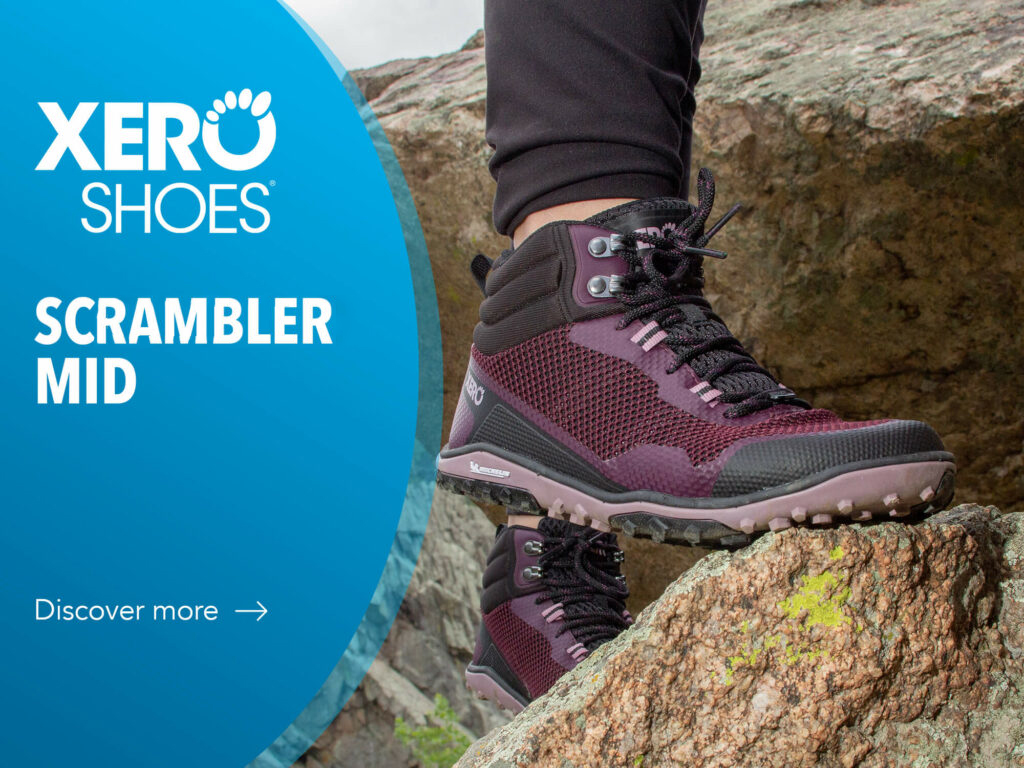Table of Contents
The mountain is that place that allows people to take breath-taking views and challenge nature in all its aspects.
From skiing to trekking, the mountains are the place where sportsmen and women are put to the test by being in close contact with the environment.
In Italy, in 1992, a new discipline began to make its way that perfectly combined technique, endurance, determination and mountains. We’re talking about skyrunning.
What is skyrunning?
The discipline of skyrunning was introduced by Marino Giacometti in the ‘90s to indicate running in the mountains from a village in a valley to the summit of a mountain and back – touching on altitudes of 2,000 metres or higher.
This precise altitude was defined because it indicates the height above which the effects of altitude begin to be evident, such as the reduction of maximum aerobic power that penalizes endurance performance.
Unlike disciplines like traditional mountain running with stringent course marking, skyrunning was free to more liberal interpretation according to the most logical route. Among the first skyrunners in the early ‘90s were mountain guides or athletes with mountaineering experience who tackled races to the summits of Monte Rosa and Mont Blanc, to Everest Base Camp in Nepal and the world’s highest race in Tibet at 5,200m altitude.
Subsequently, the spread of this discipline saw the formation of the first Federation in 1995 and subsequently, the International Skyrunning Federation in 2008 which today counts 48 member countries.
We have mentioned the name of Marino Giacometti; the man who invented a new chapter in running and mountaineering and brought the sport of skyrunning to a global level. And so…
Who is Marino Giacometti?
Born in 1951 in the Italian Alps, Giacometti is considered the father of skyrunning and today he is the President of the International Skyrunning Federation.
Over the course of his life, he managed to perfectly combine a long career as an expert with his indescribable passion for the mountains, so much so that between 1976 and 1987 he accomplished more than 50 ascents and winter climbs in the Italian Alps, Peru and the Himalayas, and before two 8,000 metre peaks.
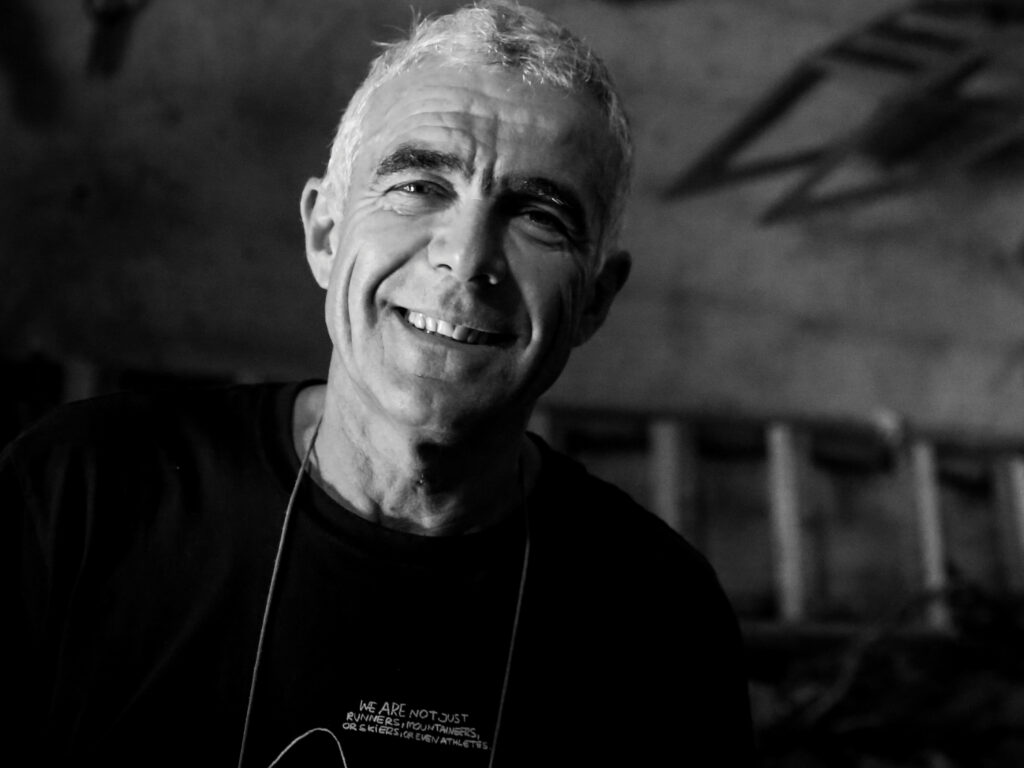
Photo credit: ©Ian Corless
Running has also always been a great passion for him. Between one mountaineering excursion and another, he participated in cycling and ski-mountaineering competitions. It was at Everest Base Camp in Nepal that he met Enrico Frachey, CEO of Fila Sport. Giacometti has always been obsessed with running at high-altitude, while Frachey wanted to launch off-road running shoes on the market, so, the two joined forces to create something new.
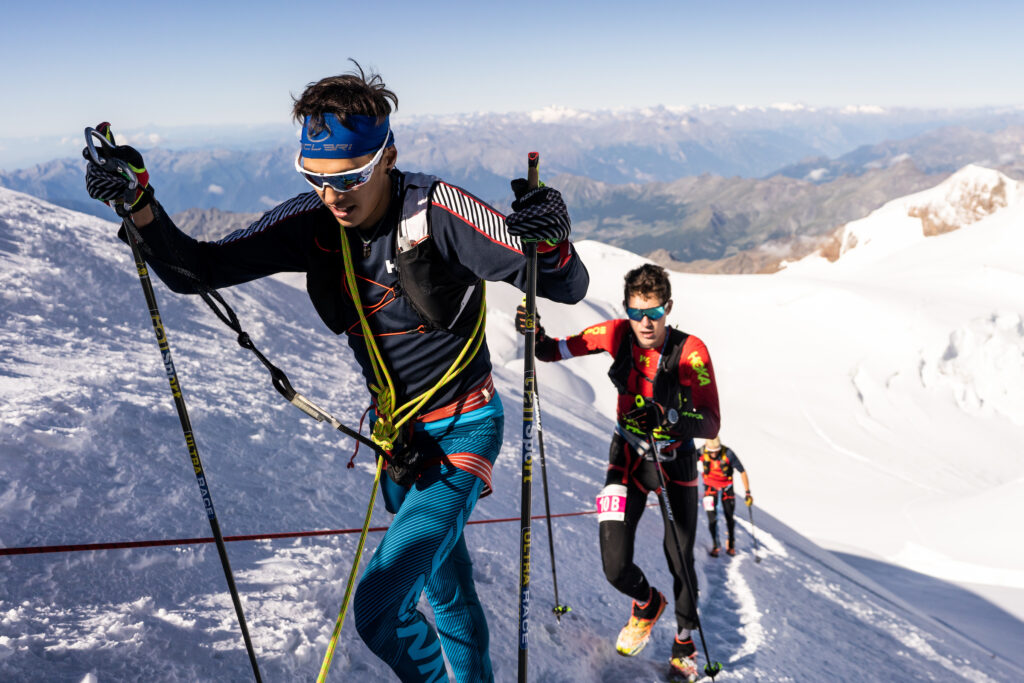
Photo credit: ©Ian Corless
From this particular encounter at the foot of Everest, a collaboration was born that led Giacometti in 1992 to create his first Fila Skyrunner Trophy circuit, giving life to this new concept of marathons at high altitude called skyrunning.
The sport represented a new source for scientific research, becoming one of the few disciplines that carried out research in the field, at altitude, and on participants, ranging from physiology to psychology, and footwear research and development.
How to best approach skyrunning
Since skyrunning is a very technical sport, it is essential to understand how it works in order to identify the best equipment and footwear to use.
Considering that this sport is practiced exclusively in close contact with nature, often off-trail and subject to variable weather conditions that can be adverse, it is crucial to be adequately equipped. The choice of shoe plays a fundamental role for the safety of athletes and their ability to successfully tackle specific routes. Numerous factors must be taken into account, including the insulation of the footwear to protect against cold or wet surfaces, cushioning, sole traction, and the overall stability of the shoe.
How important is footwear for skyrunners and what are the main features of a shoe for an athlete who practices this discipline?
It is the most important and fundamental product for running on high mountain courses or technical sections.
Stability, protection, breathability, a flexible and lightweight upper and, of course, an excellent sole with good traction – even in wet conditions and low temperatures. Cushioning, reactivity, waterproofing and so on are nice words but coexist with difficulty with the other characteristics.
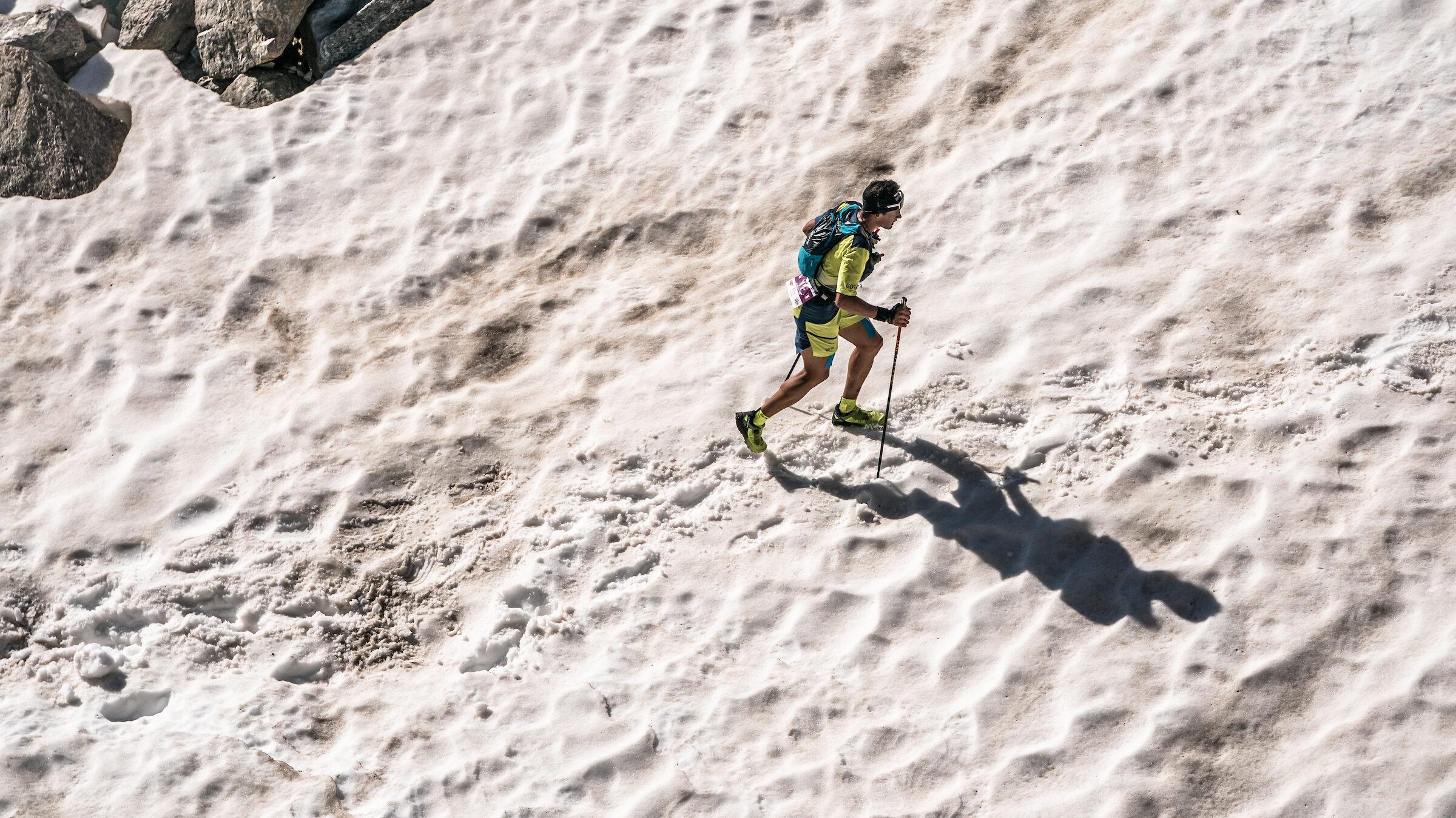
Is it important to integrate insulation into footwear to maintain heat levels even in varying conditions?
More than important: the classic mesh of the upper can be coupled with ingredients that retain heat as long as they are breathable and provide protection from water.
PrimaLoft is a good example of that kind of insulation. Even in sunny weather, many races reach significant heights, including uneven, wet, or snow-covered terrain.
Is it important that the footwear used in skyrunning competitions maintains heat even in summer?
Yes, even if it seems like a paradox. In traditional running there is often the opposite problem, even if the heat can be caused by foot movement and a low quality midsole and not by the upper. In skyrunning you can go from +20° to zero degrees or less even in a few kilometres and it is important that the foot maintains good sensitivity and support, not cooling down too much when running on cold or wet terrain. High-performance insulation is welcome: it is doubly important to have an upper that retains heat and a removable insole that insulates from the ground.
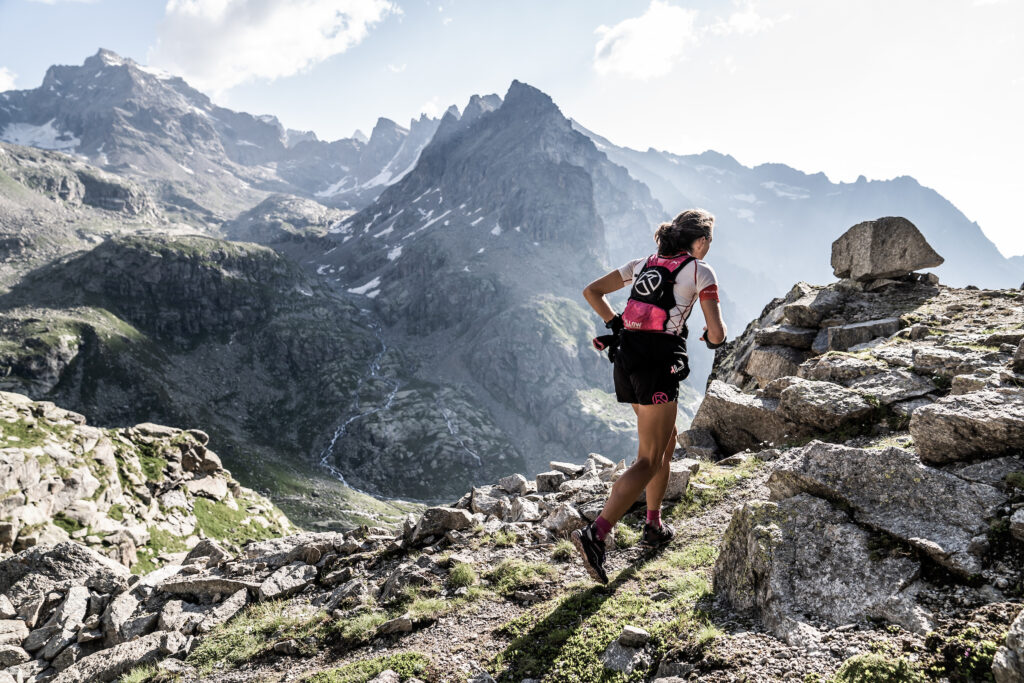
How important are the design and softness/hardness of a skyrunning shoe?
It goes without saying, the design of the upper is very important because it must wrap the foot well and ideally also provide some protection at the toe and ankle which can be achieved with a good tongue design without switching to the mid version. The best compromise must be made between softness/hardness, protection on impact with sharp surfaces and good sensitivity of the foot itself.
Does the upper with insulation change the characteristics of a shoe? Or rather, what would change in the performance?
Comparing the same shoe – with removable insole and mesh upper coupled with excellent insulation – with an EVA insole – upper in mesh only – the difference is just a few grams more. If the comparison is made with a waterproof upper, the PrimaLoft insulation version is warmer, always dry, much more comfortable especially with heavy rain and possible encounters with a puddle: the water enters from the instep and the waterproof film acts as a basin for the rest of the race.
In conclusion, as skyrunning is a sport practiced in close contact with nature, how important is sustainability for a skyrunner when choosing footwear?
The skyrunning motto has always been “leave no trace” in the mountains and – for example – the SkyMarathon to the summit of Monte Rosa (4,554m) recently obtained the ISO2021 environmental certification. We are very sensitive to the use of products and technologies appropriate for our garments, so I appreciate what brands like PrimaLoft do by trying to elevate both – the performance and sustainability of their products.
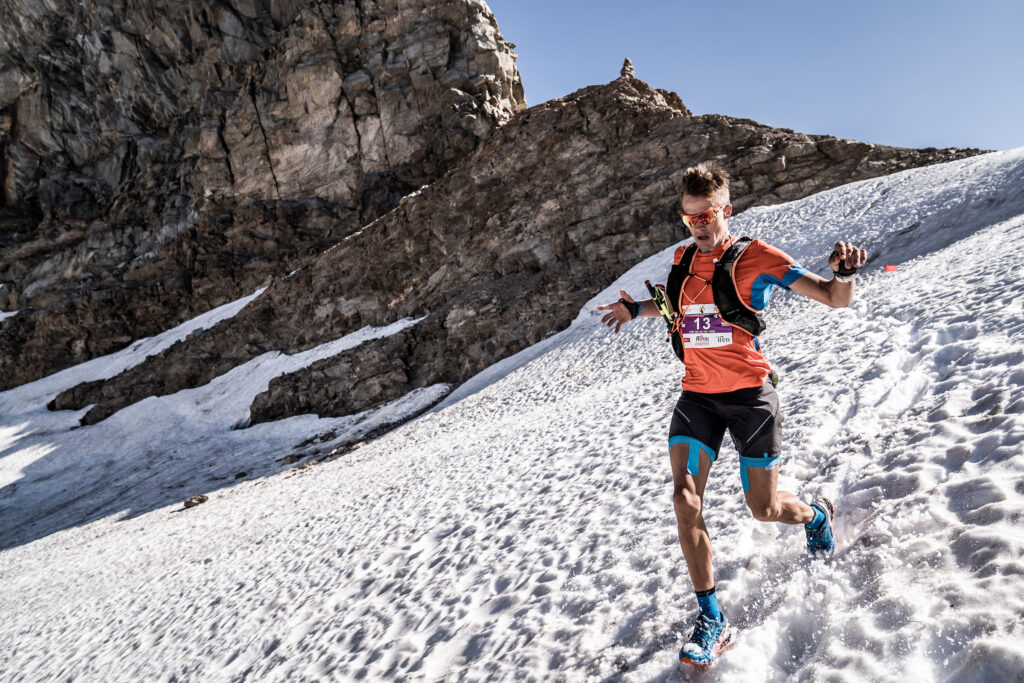
A race to the sky
Having had the opportunity to hear first-hand the words of the “father” of skyrunning helps to better understand the importance of equipment and in particular the right footwear that is needed to practice this discipline safely and serenely.
Close contact with nature, technical courses, changing weather conditions and challenging differences in elevation, help us to understand how this sport requires adequate preparation and knowledge of both the equipment and terrain. Precisely for these reasons, Giacometti’s words are essential for a more complete vision of the best characteristics and materials for an optimal skyrunning shoe.
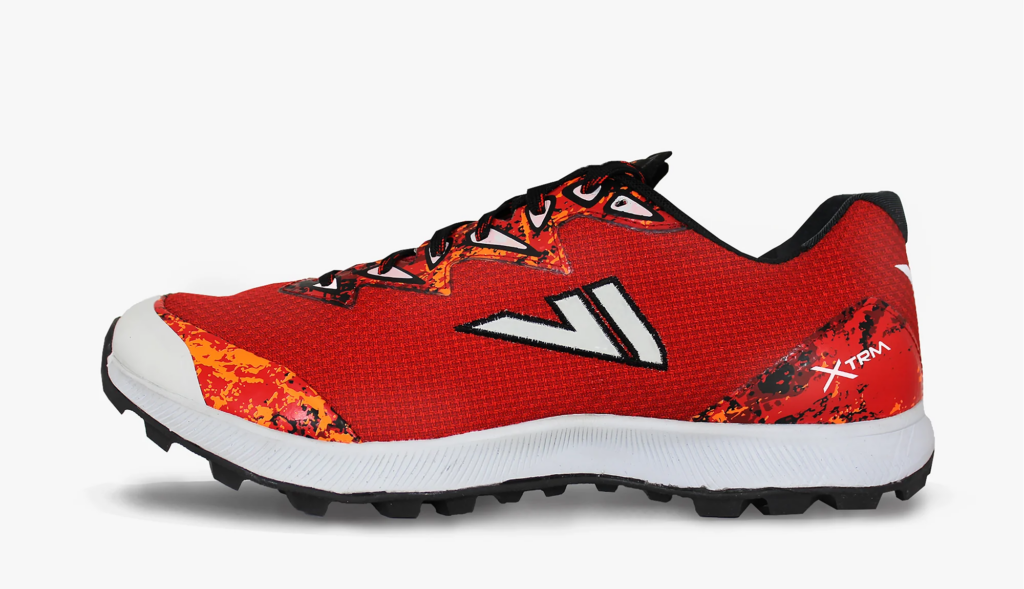
Photo credit: VJ
We want to conclude by presenting a type of footwear that can be decidedly suitable for this sport, such as the XTRM2 by VJ. A shoe designed with an innovative sole that moulds around the heel to protect and release tendon tension avoiding unpleasant injuries and with a very reactive midsole that protects the foot, making the shoe rigid during twists.
Made with decidedly resistant materials, this type of shoe is also characterized by a special rubber that has the task of offering excellent grip on particularly wet and hard surfaces, while the lugs guarantee traction on softer terrain, adapting to as many contexts as possible.
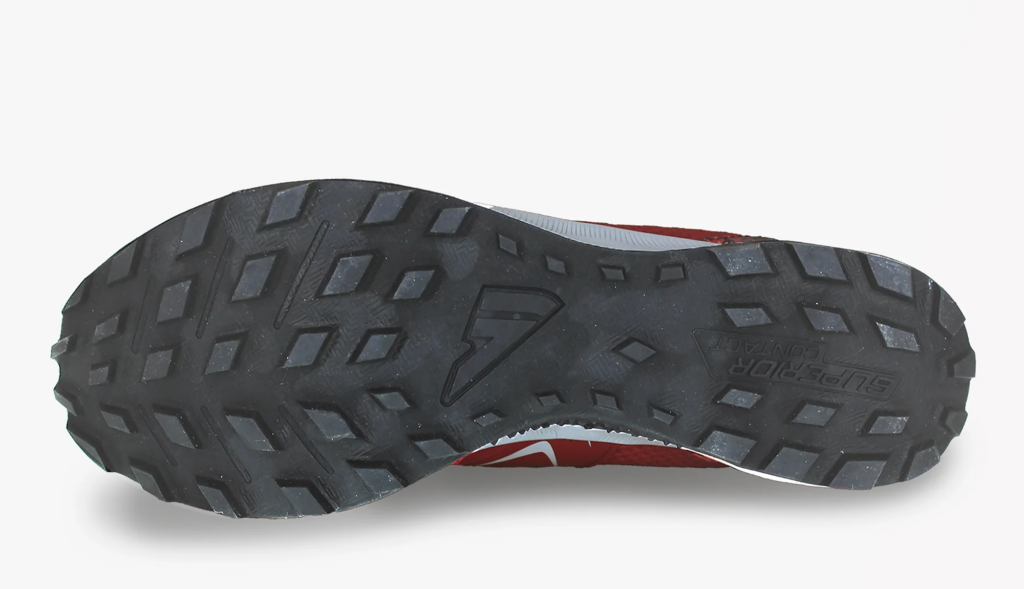
Photo credit: VJ
You may also be interested in the following articles:

The revolution of recycled leather in the world of footwear: the example of Dr. Martens
Brands like Dr. Martens are driving the shift towards eco-friendly materials in the footwear industry.
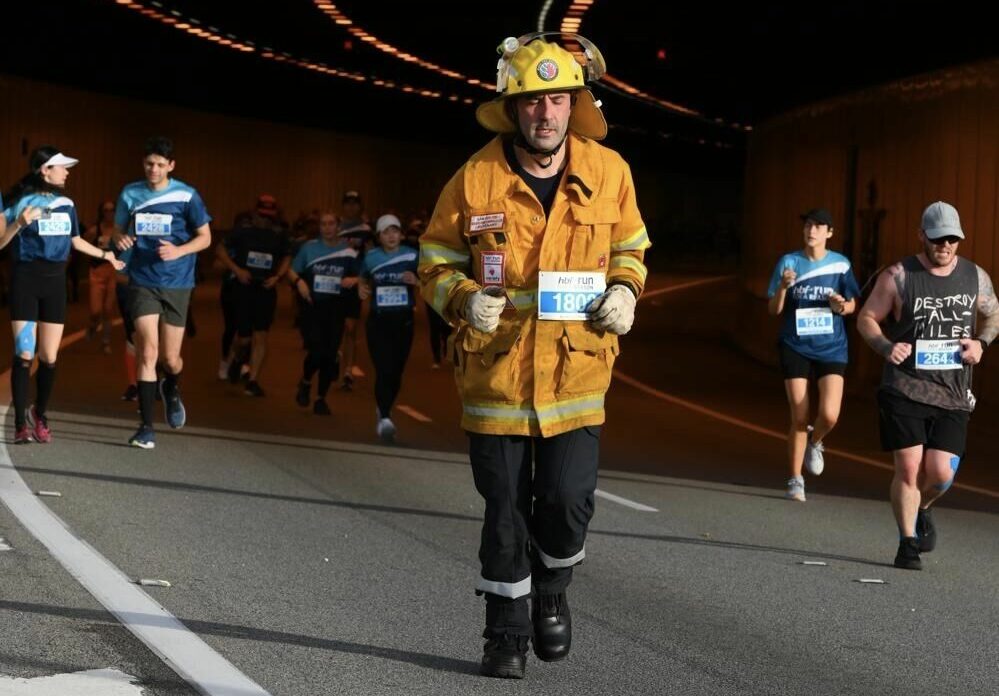
Magnum Boots and Sam Foster’s heroic feat in the Run for a Reason Half Marathon in Perth
Meet Sam, the firefighter who completed the half marathon wearing a uniform, boots included!

Safety footwear focuses on comfort and sustainability
Many innovations were presented at the A+A fair in Dusseldorf, from ultra-light or hyper-comfortable soles to environmentally conscious production systems.






































